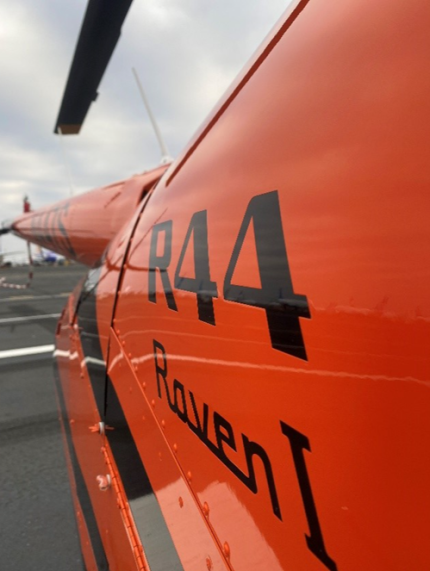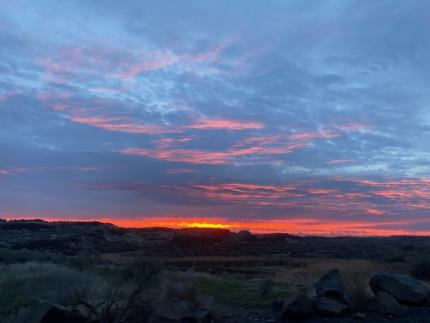Managing Wildlife Populations
Deer Management: Biologists Dougherty and Clements finished assisting additional biologists on mule deer aerial surveys within the Odessa subherd. Weather played a large factor in being able to get up in the air to complete these surveys. Fog grounded the crew for several hours, and a snowstorm/fog combination caused a cancellation of flights for the day altogether.



Mule Deer Aerial Surveys: Biologists Jeffreys and Eilers kicked off a multiday aerial winter range survey of the Chelan and Wenatchee Mountains mule deer subherds. The Chelan and Wenatchee Mountains subherds are both part of Washington’s East Slope Cascades mule deer population found in Okanogan and Kittitas counties.
The goal of these aerial surveys is to get an abundance estimate for the Chelan and Wenatchee Mountains subherds. Ratio data will be generated from these aerial observations to assess age and sex composition of the herds. Wildlife biologists use these data to inform management decisions and harvest regulations. In the case of the Wenatchee Mountains subherd, biologists will compare ratios gathered from these aerial surveys with those collected via images captured by 15 remote cameras placed along migratory routes crossing Highway 97 between Peshastin and Blewett Pass.
The surveys are timed to fall in the narrow window between the end of hunting season and the onset of antler shedding, after which time it becomes impossible to reliably differentiate between bucks and does. As is often the case in Chelan County during this time of year, low hanging clouds and patchy fog delayed the first day of surveys. However, Biologists Eilers and Jeffreys did manage to survey subunits in the foothills south of Cashmere and Monitor and in the Wenatchee Foothills at Horse Lake, Sage Hills, and Number One Canyon areas.

Mule Deer Ground Surveys: Biologists Eilers, Jeffreys, and several other Washington Department of Fish and Wildlife staff members in District 7 drove routes within predetermined units dividing up Douglas County to record the ages and sexes of all mule deer observed along the way. Unlike aerial surveys, these surveys are not used for population estimates, but instead to assess sex and age ratios, such as fawn to doe and buck to doe ratios. These ratios help biologists monitor the health and reproductive success of deer populations and aid in setting hunting regulations.


Annual Deer Surveys: Private Lands Biologist Braaten and District 7 staff members conducted annual deer surveys in Douglas County this period. Private Lands biologists classified 117 mule deer. There were 76 does, 28 fawns, and 13 bucks.




Upland Hunting ‒Trapped, Sick and Injured Wildlife: Biologist Clements responded to a call about a deer that was trapped in the east low canal with a broken leg. Biologist Clements, Officer Sullivan, and Wildlife Area Manager Eidson euthanized and removed the young deer from the canal.

Northern Leopard Frogs: Biologist Nason has been summarizing northern leopard frog data for the year-end project report and has been planning for several projects related to the 2024 field season. Upcoming projects include in situ rearing of northern leopard frogs, PIT-tag monitoring, adding a second translocation site, and bullfrog management.
Waterfowl: Biologist Clements has been responding to several harvest reports of GPS collared cackling geese. Clements has retrieved six collars within the last month. Replica collars have been given to hunters who turn in their harvested collars, and a certificate and map will be issued to them via email from Michael Guttery, a biologist in Alaska.
Biologists Dougherty, Clements, and Nason also participated in the annual winter snow goose and swan flyoff count. It was estimated that there were a minimum of 45,000 snow geese utilizing the open water in the Columbia Basin mid-December this year.

